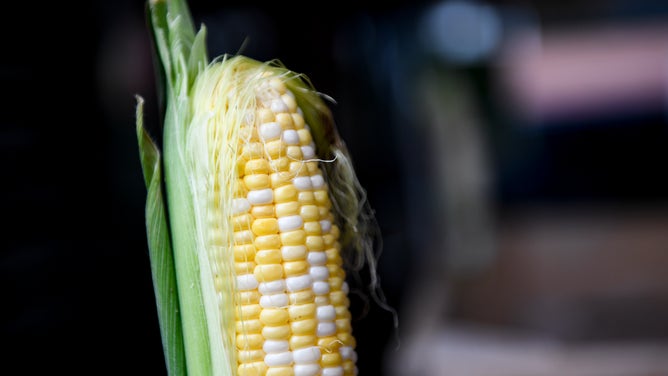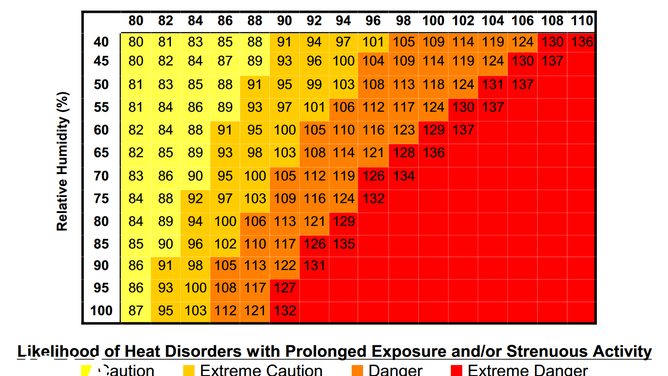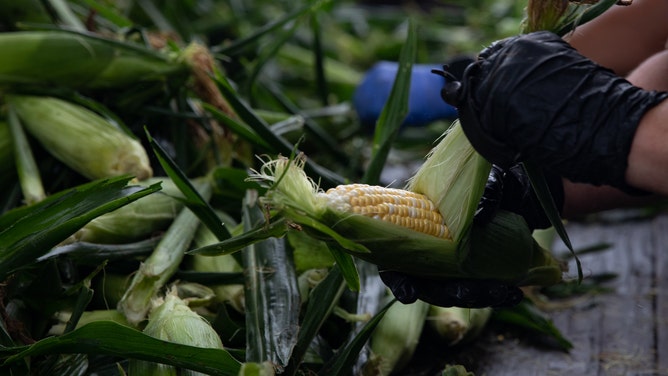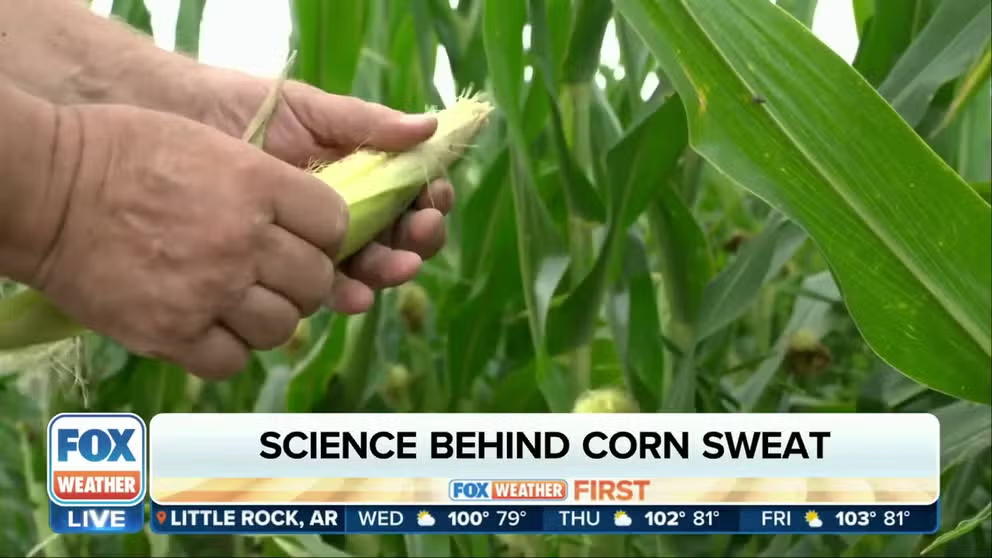How 'corn sweat' is making the Midwest's summer feel even hotter
Corn sweat adds to the humidity which makes the air feel much hotter than the actual temperature.
How 'corn sweat' enhances the heat, humidity across the Midwest
Nutrien AG Solutions meteorologist Andrew Pritchard joined FOX Weather on Wednesday morning to explain the science behind the phenomenon known as corn sweat and how it affects the heat and humidity in the Midwest.
As crazy as it sounds, corn sweat could be making the sweltering summer temperatures feel even hotter. Corn and soybean crops cause the humidity to spike, which prevents our sweat from cooling us down.
"Essentially, what's happening here is, this is how the corn plant breathes. So it's drawing moisture up through its roots," agricultural meteorologist for Nutrien Ag Solutions, Andrew Pritchard told FOX Weather. "That corn crop is drawing the water out of the soil into its leaves there and then that moisture evaporates into the air, and we call that evapotranspiration."
Pritchard, dwarfed by the giant plants of the cornfield he was standing in, added, "It's a huge plant, and it's drawing a lot of water up and putting a lot of water into the atmosphere."

File: A tractor driving through a Michigan cornfield.
( Emily Elconin/Bloomberg / Getty Images)
Corn sweat makes its own weather
He pointed out the layer of fog hugging the horizon in the field during the interview. The stalks reach 9 to 10 feet high just shy of harvest.
"So you can see almost this haze. And that is the humidity that is, literally, sweat into the air by the big corn crops that we have behind us now."
‘CORN SWEAT’ IN THE MIDWEST CAN CAUSE SOME OF THE MOST OPPRESSIVE HUMIDITY IN THE US
That corn sweat can make heat go from uncomfortable to unbearable across the "corn belt" states of Illinois, Iowa, Michigan, Minnesota, Missouri, Ohio and Wisconsin. The U.S. Department of Agriculture calls the area "one of the most intense areas of agricultural production in the world and consistently affects the global economy."
Over 127 million acres across the Midwest are agricultural. And sweating corn and soy beans make up 75% of them, according to the USDA. So it is easy to see how that many huge sweating and breathing mature plants can add to the humidity.

File: A partially shucked ear of bi-color corn.
(Ben Hasty/MediaNews Group/Reading Eagle / Getty Images)
Why does a humid day feel so hot?
The more humidity in the air, the harder it is for your body to stay cool because there is less evaporation of the perspiration from your skin. Evaporation is a cooling process, so the evaporation of that sweat is your body’s natural way of cooling itself down. More evaporation occurs when the air is dry than when it’s humid, so it is easier to cool down in a "dry heat."

You can calculate the heat index or feels-like temperature by knowing the temperature and the relative humidity.
(National Weather Service / NOAA)
This is why the NWS issues Excessive Heat Warnings and Heat Advisories. Take a look at the orange and red zones on the heat index chart above. Those are the "danger" and "extreme danger" zones where people are likely to suffer from heat illness.
The warm Gulf of Mexico already pumps copious amounts of moisture into the South and Midwest in the summer, but add in the corn sweat and humidity climbs even higher.
HOW THE WEATHER YOU'RE ACCUSTOMED TO AFFECTS NWS HEAT WARNINGS ADVISORIES

File: A worker shucks and ear of corn during a Michigan corn harvest.
(Emily Elconin/Bloomberg / Getty Images)
"That (process) will release that additional humidity and you can have a heat index spike at about 120, 130," said Meteorologist Stephen Morgan, who grew up in the corn belt. "We pride ourselves in the Midwest of having microclimates, thanks in part to corn – not mountains, corn."
A 92-degree day can feel like 121 degrees when the dew point reaches, say, 85 degrees, or 80% relative humidity, according to the NWS' heat index calculator.
IT'S NOT THE HEAT; IT'S THE HUMIDITY: MOISTURE INCREASES HEAT RISK IN URBAN CLIMATES
These heat index values were calculated for shady, light-wind conditions, but you should be aware that exposure to full sunshine can increase the feels-like temperature by as much as 15 degrees, according to the NWS.
"There was a 91-degree dew point in Clarion, Iowa, back in 2021, and it rivaled the highest dew point ever in the continental United States," Morgan added. "Whether or not that was official, that's what's in question. But Clarion, located in the middle of a cornfield."
